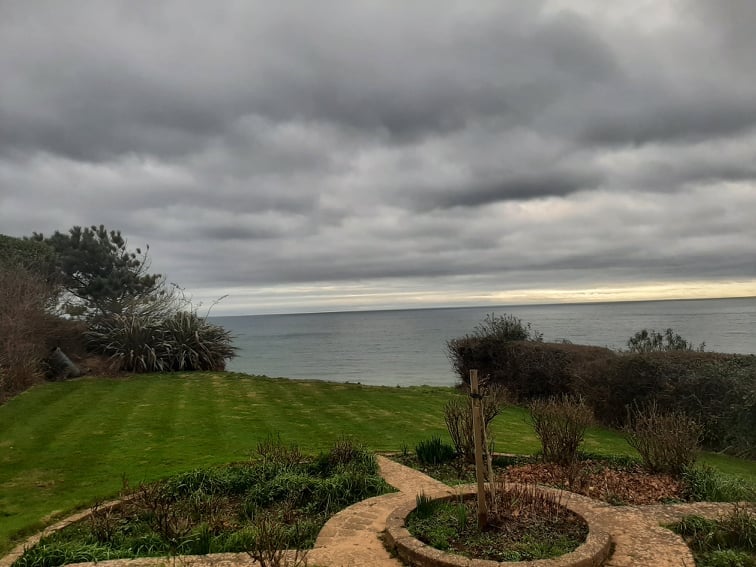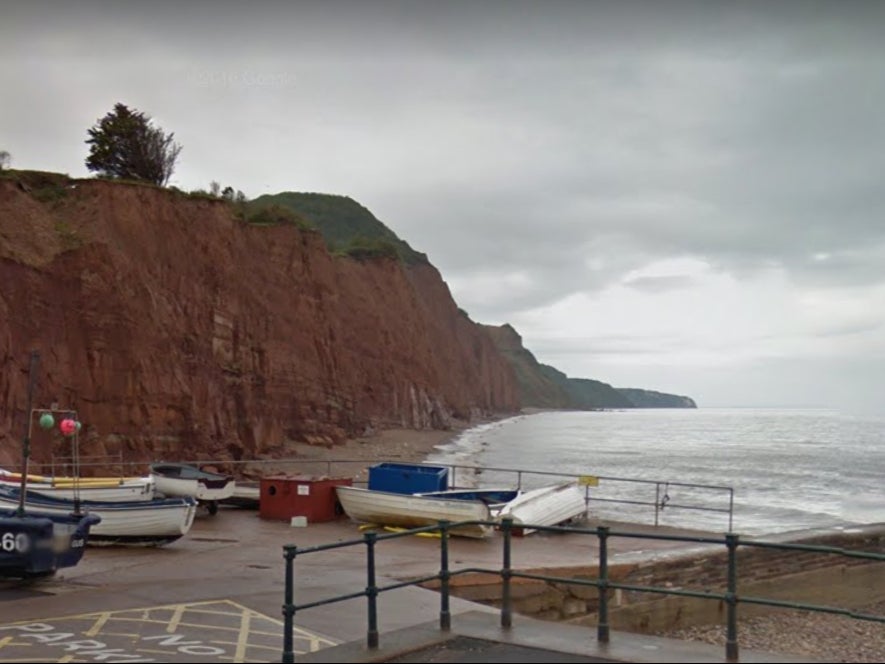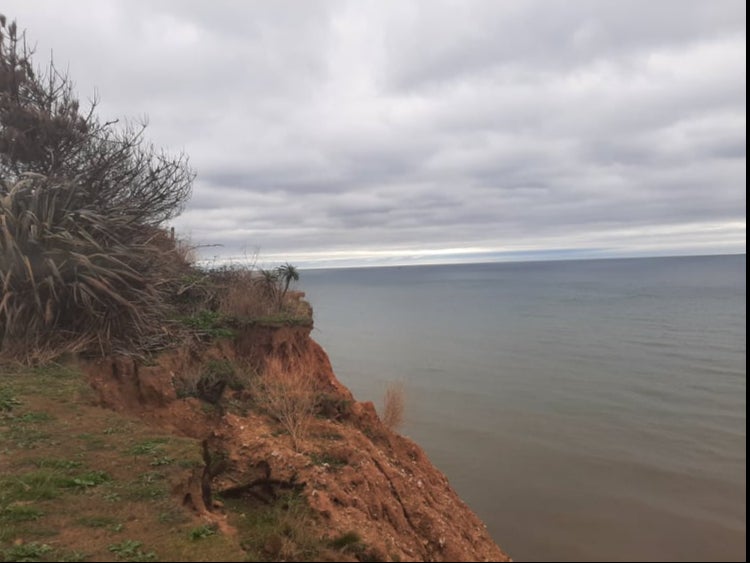The clifftop homes that are ‘falling into the sea’ because of the climate crisis
‘I tend to keep at least a metre away from the edge,’ says one resident who estimates his house has 30 years left


Paul Griew always knew that his home, which sits on top of a cliff in Devon, would not last for ever.
When he bought it in the late 1990s, he worked out that it would take 300 years for the crumbling edge to reach his property.
But the rate of erosion has since increased. “It’s 30 years at best at the moment,” the retired 73-year-old tells The Independent from his living room overlooking the sea.
His house in Sidmouth is one of many across the UK whose lifespan will be determined by how quickly the cliffs on which they sit crumble.
The Climate Change Committee, which advises the government, has warned that more than 100,000 properties could be at risk of coastal erosion by 2080.

Since Mr Griew has lived in his house on Cliff Road, he has seen around 20 metres of his garden, including a summer house, tumble into the English Channel.
When the first section went, the 73-year-old rushed to check that the gardener – who had been there not long before – was safe. “I told him and he had to sit down,” he says.
Five minutes later, the summer house followed over the side of the cliff.
Mr Griew says he was just about to go and collect some things from it when the bit beyond it collapsed. “And I didn’t, fortunately.”

Even so, the retired consultant says he does not worry too much about getting caught in a collapse. “It happens once every six years and you lose five or six metres. So the chances of it going when you’re there are quite low.”
He adds: “I tend to keep at least a metre away from the edge anyway.”
While he would lose 10cm of his garden every year when he first bought the property, it is now more like a metre.
Mr Griew says one of the reasons is that the flood defences set up to protect the town of Sidmouth have prevented a process known as longshore drift – a natural defence against coastal erosion – which means that shingle has not been able to build up at the base of the cliff.

The Environment Agency has also warned that the risk of coastal erosion is growing as sea levels rise and the frequency of storms increases as a result of the climate crisis.
But for Maria and Richard Dudley, who live further up the road, the threat is a small price to pay for a house in such a scenic position.
“Where else would you get this view for less than a million?” Maria asks from her garden backing out onto the sea.

She explains that the garden has lost just a metre of its 60-metre length since they bought the property around seven years ago.
Her husband tells The Independent that coastal erosion is “not a problem”. However, he says, he is fed up with the publicity.
Another resident, Jasmine Reeves, says house prices are being driven down by the crumbling landscape – but puts this down to a lack of protection rather than media attention.
The 31-year-old says her house – which lost its orchard over the side of the cliff – has been valued at around £750,000. “But the properties around here would go for more than that if it wasn’t for the cliff,” she adds.

But this isn’t a problem for Mr Griew, who is not thinking about selling his house – despite the fact that it could disappear into the sea within the next few decades.
That isn’t to say its estimated lifespan of 30 years doesn’t bother him. It could always end up being faster than that, and it would be nice to pass the house on to his children, he says.
“But also it’s a lovely position,” he adds, as the sea gleams through the huge glass doors at the back of the house. “It’s worth keeping houses along here.”
After years of back and forth between different agencies, engineers, consultants and the council, there are plans for protective measures, including several metres of shingle on the beach and groynes, Mr Griew says.
“We’re told summer of 2023 is a likely start date, but I’m not holding my breath at the moment,” he adds.
An East Devon District Council spokesperson said that the gradual erosion of the East Beach cliffs was “natural and unpredictable”, as the rocks are soft and prone to falls – although periods of heavy rain can increase the rate.
Experts suggested that heavier and more frequent storms as a result of the climate crisis, more rainfall, the collapse of an abandoned railway tunnel, manmade structures on the promenade and the Sidmouth flood defences are all possible reasons behind the increased cliff erosion. “Any of these could be the cause, or it may be simply a combination of all of them,” they said.
The council has faced delays to its beach management plan while trying to secure extra funding, and is aiming to start work on the £14m project in 2024, the spokesperson added.
Join our commenting forum
Join thought-provoking conversations, follow other Independent readers and see their replies
Comments
Bookmark popover
Removed from bookmarks